Bee in Your Bonnet?
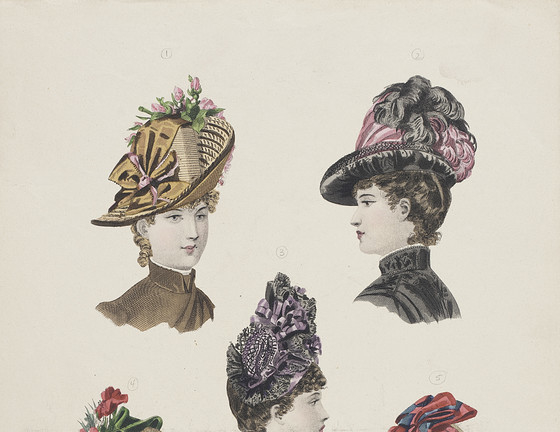
by Thena MacArthur, First published for the March/April 2011 issue of Finery
I am crazy for Victorian hats and bonnets. It should come as no surprise that I am writing about them: those who know me are probably rolling their eyes. For the sake of brevity, I will not comment on what passes these days for a “Victorian Lady’s Hat,” as the very opinion might well light the page on fire. Instead, I’d like to talk about genuine Victorian headwear. Specifically, let’s chat about my personal favorite: the delightful bonnets of the later Bustle period (1883 – 1889.) I hope to give you a taste of the styles and some information to help you in buying an antique or making a reproduction.
The bonnet was always a favorite since it was extremely practical: in theory it protected a lady’s face from sunlight and unwanted glances, though often at the cost of being able to hear. It reached its peak of protective styling in the Regency and early Victorian periods. Bonnets of the 1840s, 50s and 60s included a “curtain” of fabric to hide a woman’s sexy nape of the neck. Yet, as the styles of the crinoline gown were replaced by the bustle, hats became far more popular amongst the younger ladies and bonnets began to shift back from the face and eventually away from the ears. Hairstyles helped influence this change: they were far more elaborate, often cascading down the back or piling up on the top of the head in pounds of false curls. The curtain was hopelessly out of fashion by 1870.
Beginning around 1880, possibly due to a desire to make interesting fashion changes to go with a new decade or the reduction in size of the basic hairstyle, hats began to grow almost exponentially with the size of the bustle. It was all about proportion. The bigger the bustle: the taller the hat and sometimes the wider the brim. Bonnets followed along, but managed to keep to their decorative but useless status. Like the hat, the bonnet became taller as the bustle became larger. It was all in keeping with the late Bustle period notion of verticality. Clothing had longer, tailored lines, and there was no point in ruining the look with a disproportionate chapeau. By this point, many hats and bonnets were distinguishable from each other only by the presence of ties, and fashion magazines were inconsistent about the terms. For our use, chin ties make it a bonnet.

The trick to recognizing a late Bustle period bonnet, beyond the ties, is to look at the brim. Bonnets of this period pile up ribbons, flowers and feathers to create height. The brim will rarely protect the skin (that was what a parasol was for.) The idea was to present the face for viewing. Fringe, or crimped and curled bangs, were all the rage, thus a bonnet’s brim could not obscure such a fashionable feature. The crown of a bonnet tended to be either smaller than or equal to the height created by the brim.
In fact, a very commonly found bonnet amongst antique sales is the Toque – a horseshoe shaped, flat, brimless item with a great deal of decoration at the top and meant to be worn far back on the head. This type of bonnet remained popular into the 1890’s. With the base made from straw, buckram, felt, or wire, there was no limit to how it could be decorated so long as it was clustered above the face. Examples with jet beads, egret feathers, silk, velvet, and lace can be found everywhere. Many bonnets without a specific brim were often covered with a turban-like roll which accomplished creating a “mini brim.”
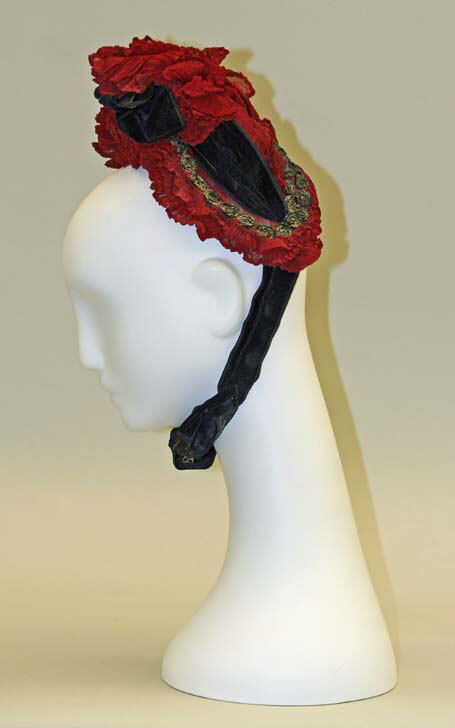
If you find a Conquistador brim bonnet, buy it! This bonnet is frequently seen in fashion magazines of the period but rarely found for purchase these days. I have yet to hear why this is, though I shall be happy to share when I find out. Needless to say, the Conquistador is rare. The brim is sharply pointed at the center front. In some cases, the point is so exaggerated that it curls back away from the face. Both hats and bonnets had this extraordinary brim which suggests the pointed helmets worn by Spanish soldiers, hence the name Conquistador. Decoration was often placed in the void under the peak as well as on top of the crown and at the sides.
A variation of the Conquistador was called the Gable or Olivia bonnet. The brim was tall in the front but not quite as pointed. The crown was an odd oval that reached above the height of the brim. If a Gable did not have a specific brim, a roll of fabric was used to suggest the peak of a brim.
A classically shaped bonnet, much like the Spoon bonnet of the 1860s was called the Directoire or Empire bonnet. Again, like bonnets of the 1880s, it was focused on drawing attention to the face without covering the ears. This style became very prevalent during 1888 – 89 as a clothing style called the Directoire became popular and recalled the fashions of the late 1700s.
I highly recommend that you not purchase any bonnet you cannot see both outside and inside. Bonnets of this period used silk or cotton as lining, limited often to black, white or cream. The lining is tacked into the underside of the brim and gathered together at the top of the crown inside with a string. If you are lucky the milliner’s stamp may be found on a swatch of fabric tacked under the peak of the crown, showing through the lining gather – this adds value to the antique. Sadly, the lining often is damaged from wear and the natural disintegration of the fabric.
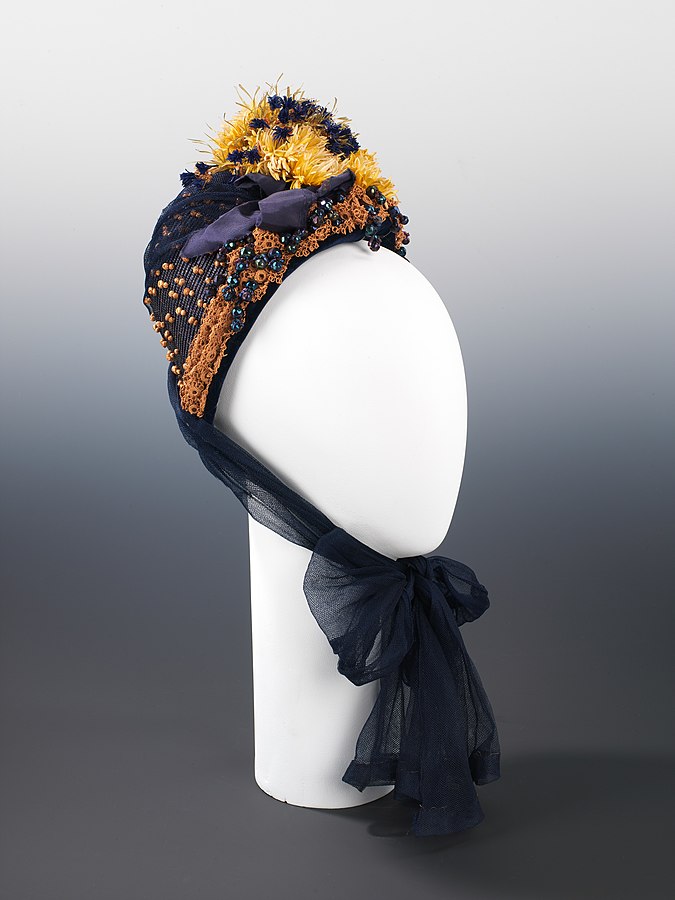
An exception to the crown / brim ratio noted above is the Paris bonnet. In this case, the brim is set back from the face as usual but the crown is very tall and narrow. This crown resembles a turned over flowerpot, but because chin ties are involved, the Paris is technically a bonnet. Like many other tall hats, these are hard to find as antiques, perhaps due to either storage problems for large items or because they could provide a substantial amount of material to make a new hat or bonnet from.
There is no end to the colors and decorations, however it would seem the best kept and thus most easily found today are the basic black bonnet – the little black dress of the time. It was a matter of economics: if a lady could afford one good hat or several poor ones, the choice went to one good, multiuse bonnet. And black went with everything then too.
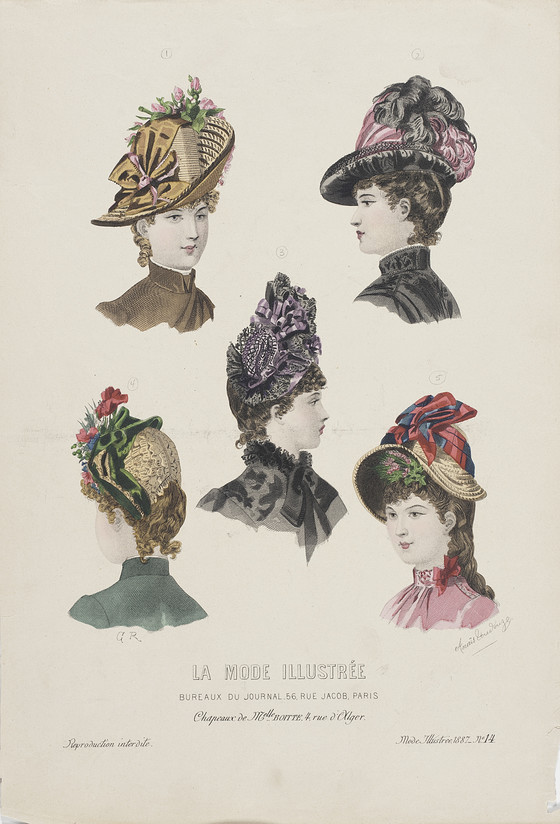
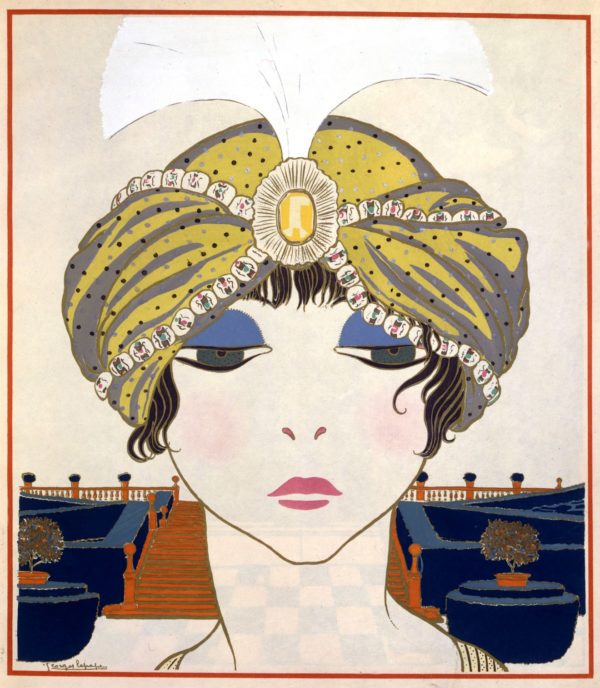
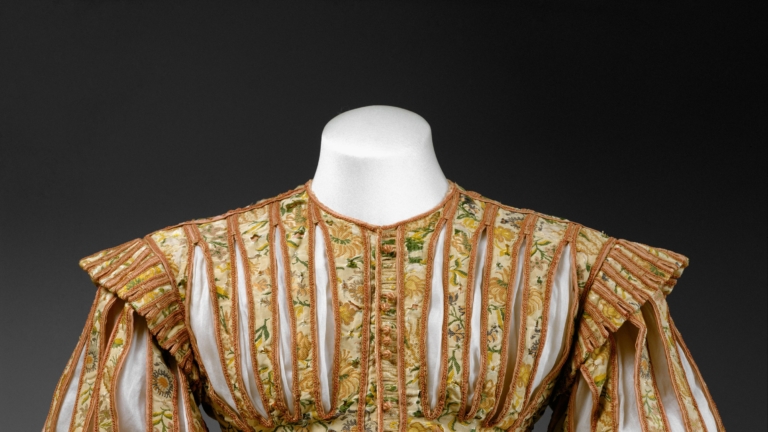
Leave a comment